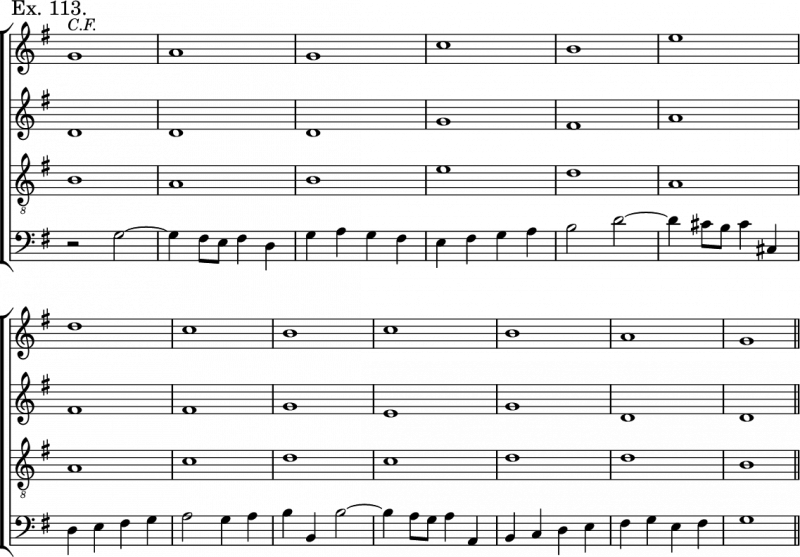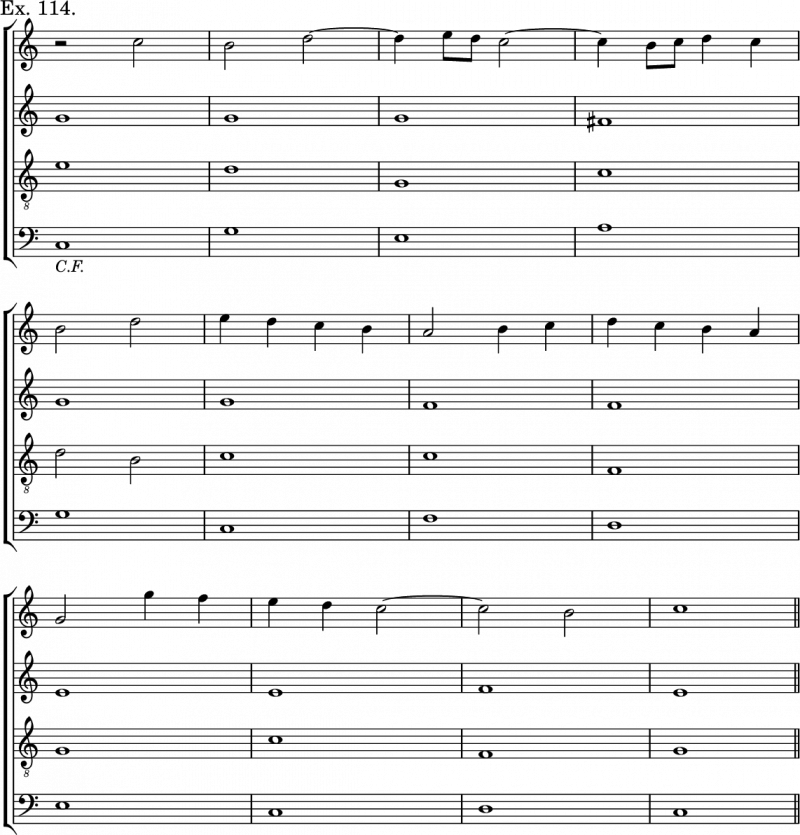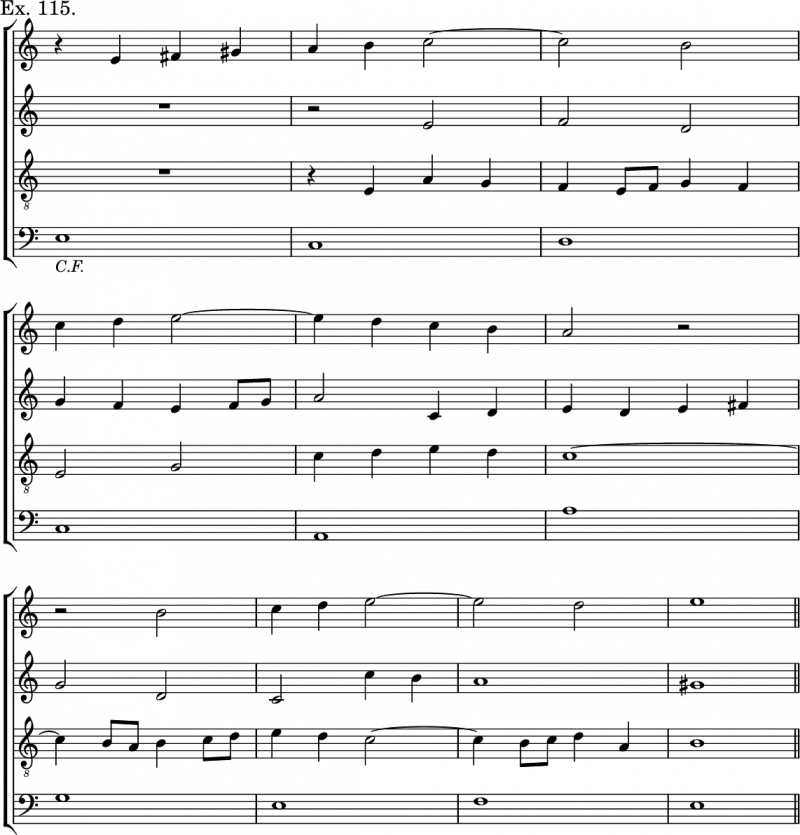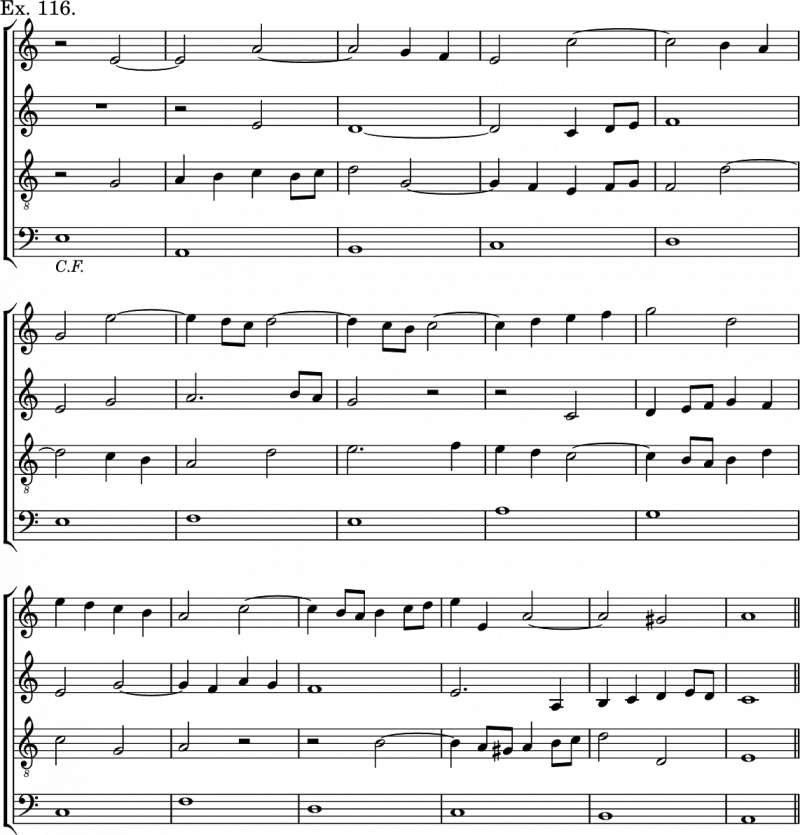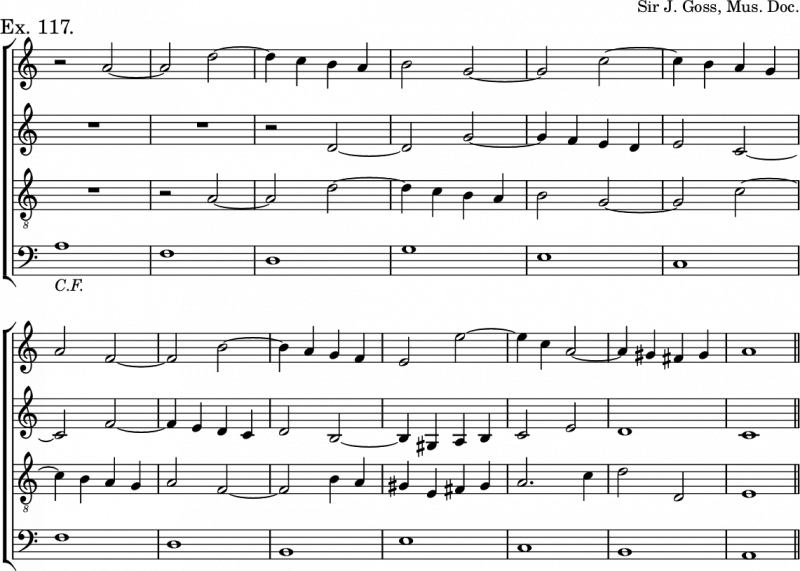Counterpoint (Bridge): Chapter 13
Fifth Species in Four Parts
Florid Counterpoint
Nothing need be added to the remarks already made on florid counterpoint, except that this may of course be written in one part only (the other parts having notes of equal value with the cantus firmus), or in all the parts. In the latter case, particular care should be taken to contrast the counterpoints, as was remarked at the beginning of Chapter 10. 1)
The notes in the tenor part of the above example, bar 3, represent the pitch F. There is therefore only an apparent 6/4at the third crotchet 2).
In Ex. 115 and 116, a part occasionally rests a whole bar or, rather, two half-bars. This is often very useful in florid counterpoint in four or more parts.
Florid counterpoint is often much improved by the introduction of points of imitation. The student will observe how admirably Sir John Goss has done this in the above example. The sequential imitation justifies many points which might otherwise be open to objection.
| Navigation | ||
|---|---|---|
| « Chapter 12 | Contents | Chapter 14 » |
